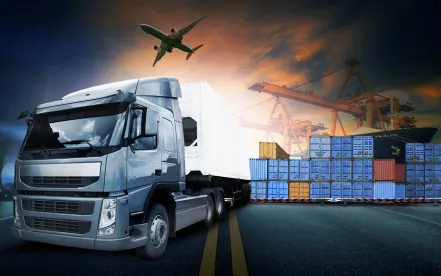The U.S. Department of Transportation (DOT) Pipeline and Hazardous Materials Safety Administration (PHMSA) routinely reviews and amends the Hazardous Materials Regulations (HMR) to harmonize the HMR with international regulations and standards. In February 2019, PHMSA’s Office of Hazardous Materials Safety (OHMS) contracted with the Cambridge Systematics (CS) Team to conduct a risk assessment for the transportation of aerosol containers to align U.S. and international regulations. The study is intended to determine whether the United Nations Recommendations on the Transport of Dangerous Goods -- Model Regulations (Model Regulations) definition of aerosols maintains an equivalent level of safety to the definition in the HMR and to assess the risk associated with aligning the definitions. The study is expected to be completed in February 2020, and any rulemaking to align the definition of aerosol containers would be issued after that.
Federal law and policy favor the harmonization of domestic and international standards for hazardous materials transportation. In a November 27, 2018, proposed rule to amend the HMR to maintain alignment with international regulations and standards, PHMSA notes that it was directed by the federal hazardous materials law “to participate in relevant international standard-setting bodies and requires alignment of the HMR with international transport standards to the extent practicable.” While federal hazmat law allows PHMSA to depart from international standards to promote safety or other overriding public interest, “it otherwise encourages domestic and international harmonization.”
The Model Regulations define aerosol or aerosol dispenser as “an article consisting of a non-refillable receptacle meeting the requirements of 6.2.4, made of metal, glass or plastics and containing a gas, compressed, liquefied or dissolved under pressure, with or without a liquid, paste or powder, and fitted with a release device allowing the contents to be ejected as solid or liquid particles in suspension in a gas, as a foam, paste or powder or in a liquid state or in a gaseous state.” The HMR, in 49 C.F.R. Section 171.8, defines aerosol as “an article consisting of any non-refillable receptacle containing a gas compressed, liquefied or dissolved under pressure, the sole purpose of which is to expel a nonpoisonous (other than a Division 6.1 Packing Group III material) liquid, paste, or powder and fitted with a self-closing release device allowing the contents to be ejected by the gas.” Unlike the Model Regulations, the HMR permits only an aerosol with a liquid, paste, or powder. Industry has petitioned PHMSA to align the definitions and permit certain non-refillable gas containers with or without a liquid, paste, or powder to be transported without needing a Special Permit.
Commentary
Since the study is not expected to be completed until February 2020, there will be no immediate impact for U.S. manufacturers of aerosol products. The study will likely conclude that the definition of aerosols in the Model Regulations ensures an equivalent level of safety to the definition in the HMR, and that there is no risk associated with aligning the definitions. Should this be the outcome, PHMSA would then initiate a rulemaking. We would expect the rulemaking to align the HMR definition with the Model Regulations and permit certain non-refillable gas containers with or without a liquid, paste, or powder to be transported without needing a Special Permit. Stakeholders may wish to keep an eye on the study and, of course, any ensuing rulemaking and comment as appropriate.


 />i
/>i

